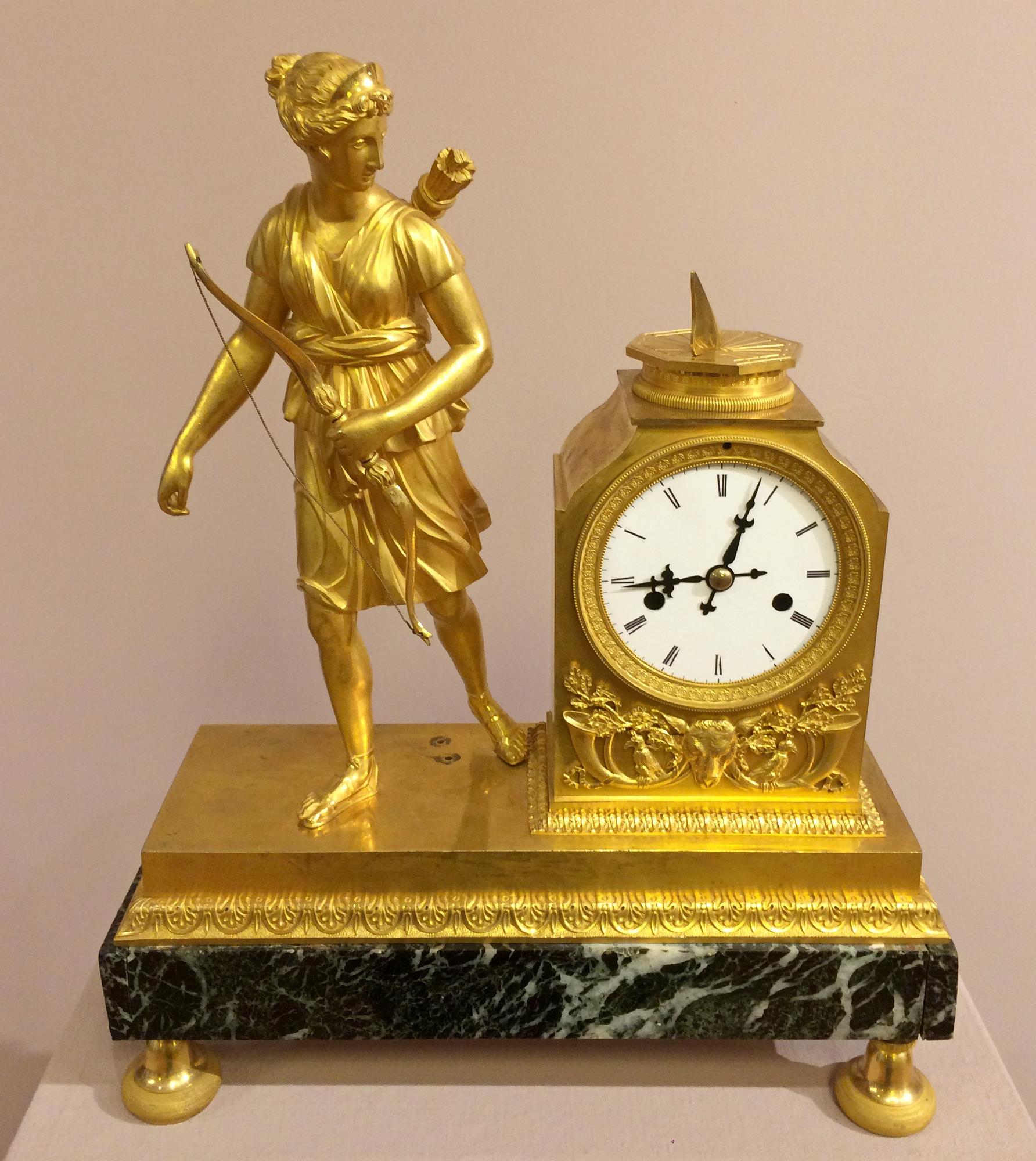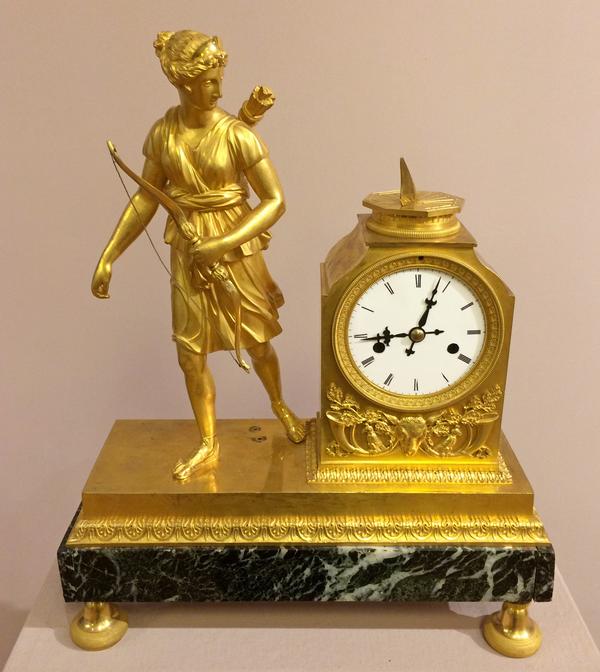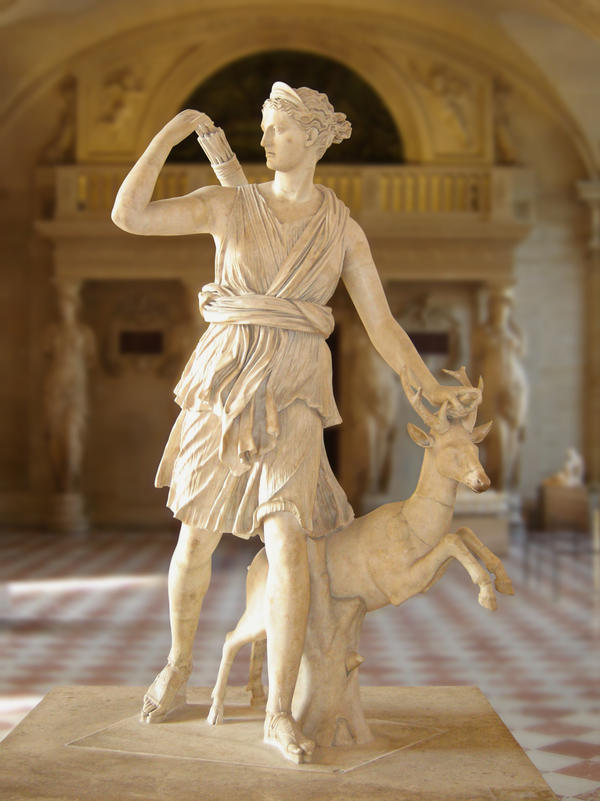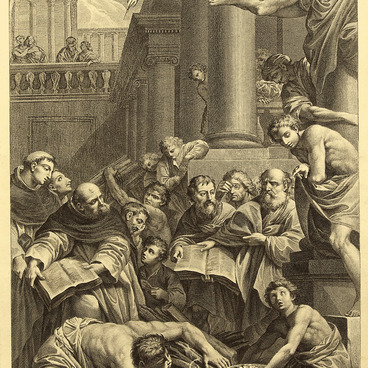This mantel clock with a figurine of the goddess Diana was created by an unknown master in the first half of the 19th century. The author allegedly made it in France. He cast large parts from bronze, and then decorated them with chased patterns and engraving. He covered the body with gilding and placed it on a stone stand.
Mantel clocks at that time were an important status attribute. The fireplace was a special part of the house decoration. For its design, the owners hired the best artists and casters — they decorated its portals with marble and skilful carvings. The clock was usually placed in the very middle of the mantelshelf and was flanked by candelabra or vases. Such an interior ensemble emphasised the prestige of the homeowner.
The clock with a figurine of Diana was a real luxury item. Glittering gilding, filigree chasing and general decor in the Empire style corresponded to the status destination. This artistic style is considered the pinnacle of Classicism; it is distinguished by the desire for grandeur and greatness. The Empire style borrowed many motifs from the art of Ancient Greece and imperial Rome. That is why on the left side of the product the master placed the figurine of the goddess Diana.
The ancient Romans revered Diana as a goddess-huntress, the patroness of animals. In addition, she protected mothers during childbirth and was considered the goddess of the moon. Art historians distinguish the images of Diana the huntress in a separate type, which is called Agrotera the huntress. The figure of Diana on the clock corresponds to this type: the goddess is dressed in a chiton, raised slightly for convenience, on her back is a quiver with arrows, in her hands — a bow.
Mantel clocks at that time were an important status attribute. The fireplace was a special part of the house decoration. For its design, the owners hired the best artists and casters — they decorated its portals with marble and skilful carvings. The clock was usually placed in the very middle of the mantelshelf and was flanked by candelabra or vases. Such an interior ensemble emphasised the prestige of the homeowner.
The clock with a figurine of Diana was a real luxury item. Glittering gilding, filigree chasing and general decor in the Empire style corresponded to the status destination. This artistic style is considered the pinnacle of Classicism; it is distinguished by the desire for grandeur and greatness. The Empire style borrowed many motifs from the art of Ancient Greece and imperial Rome. That is why on the left side of the product the master placed the figurine of the goddess Diana.
The ancient Romans revered Diana as a goddess-huntress, the patroness of animals. In addition, she protected mothers during childbirth and was considered the goddess of the moon. Art historians distinguish the images of Diana the huntress in a separate type, which is called Agrotera the huntress. The figure of Diana on the clock corresponds to this type: the goddess is dressed in a chiton, raised slightly for convenience, on her back is a quiver with arrows, in her hands — a bow.




